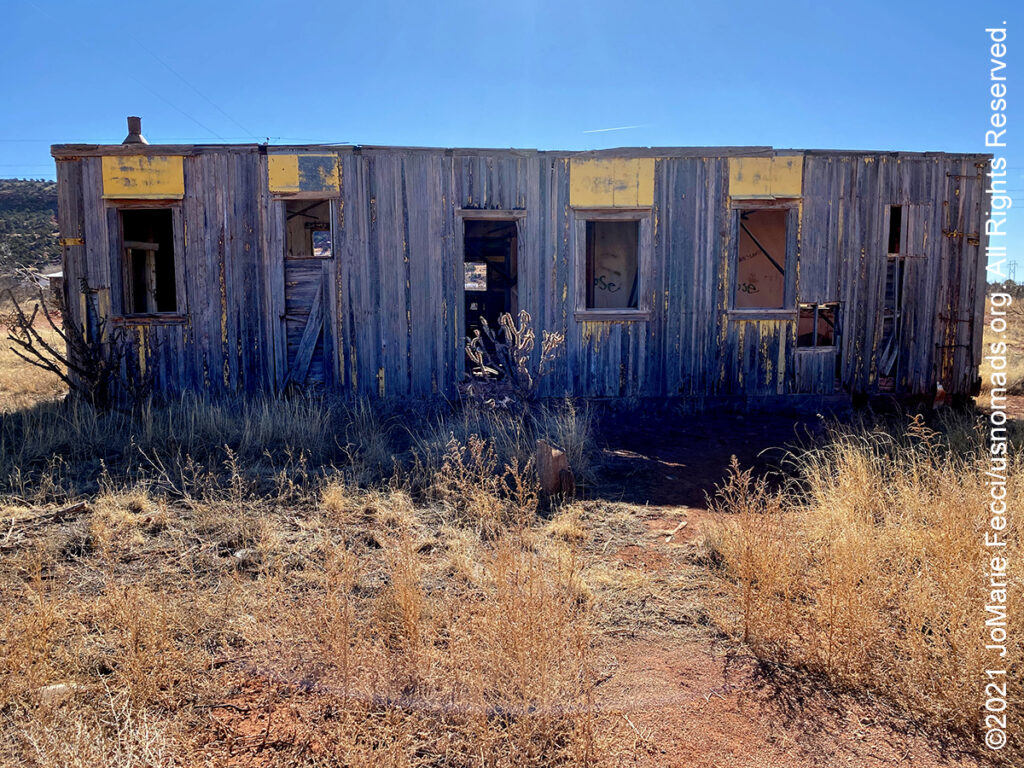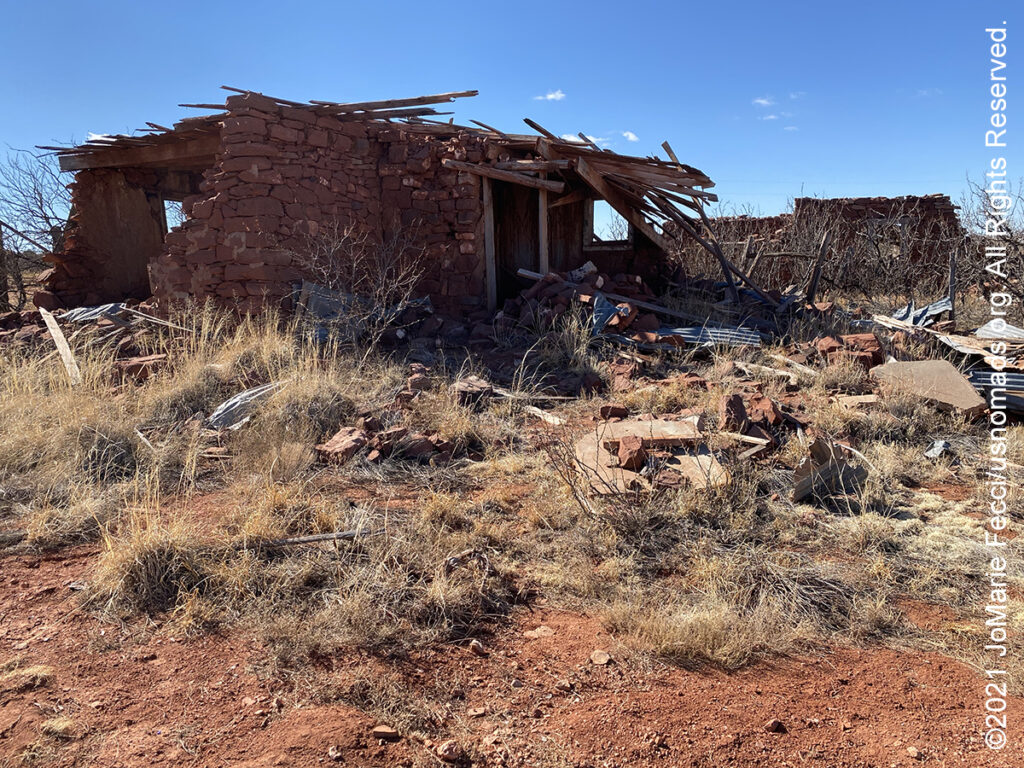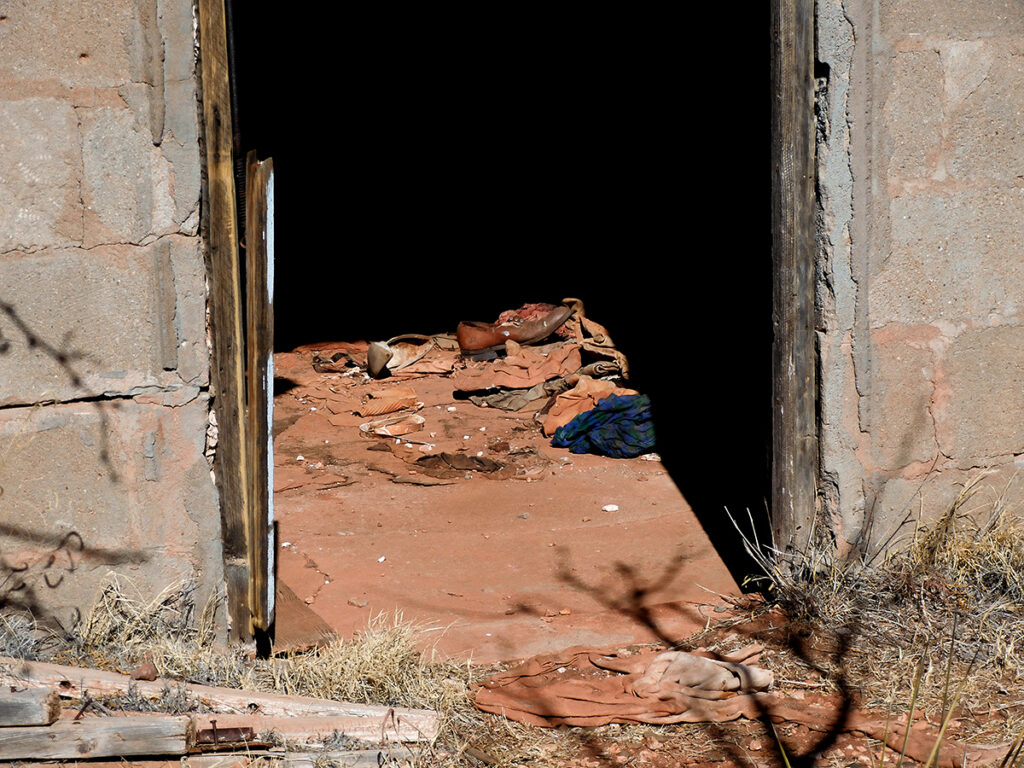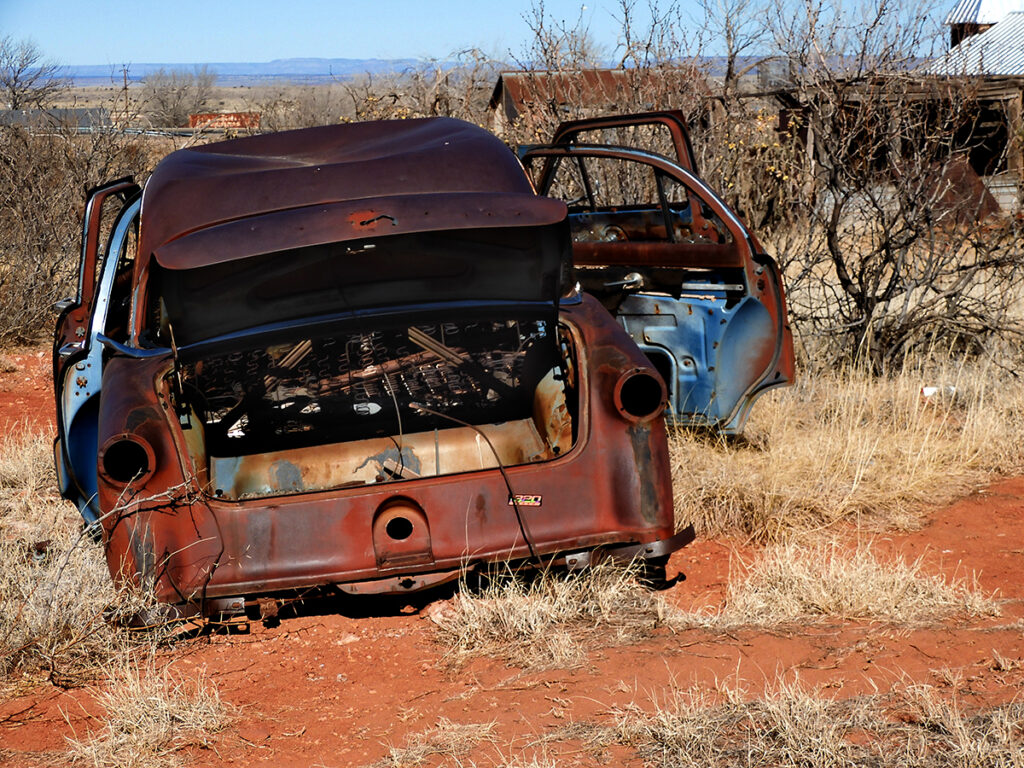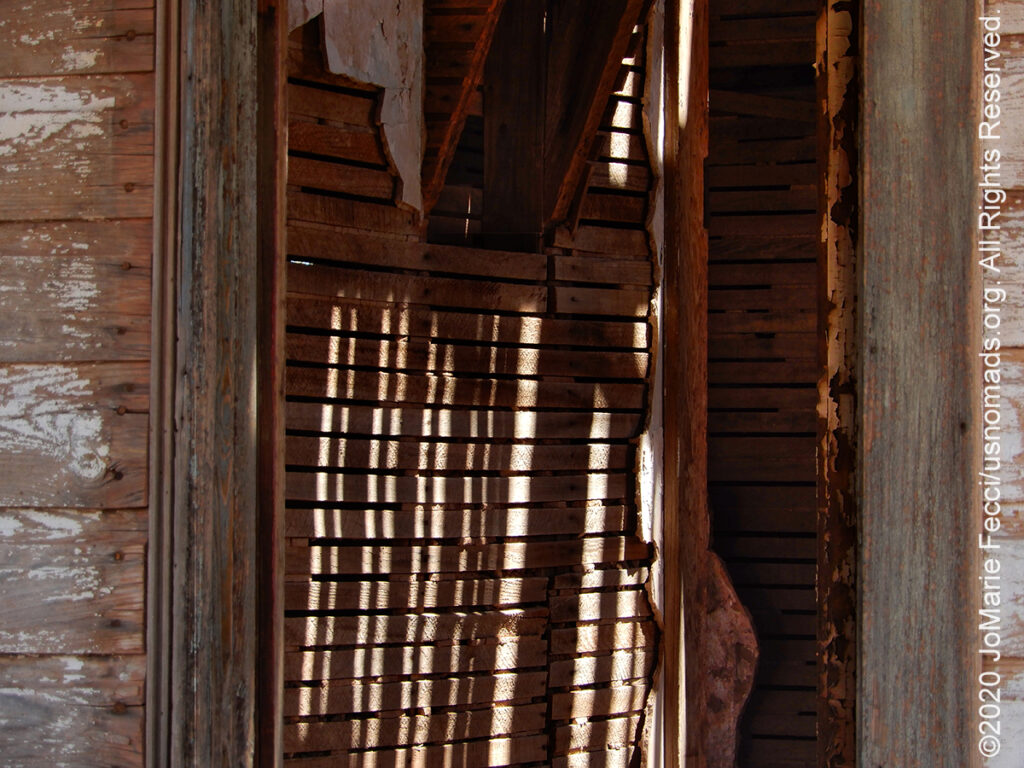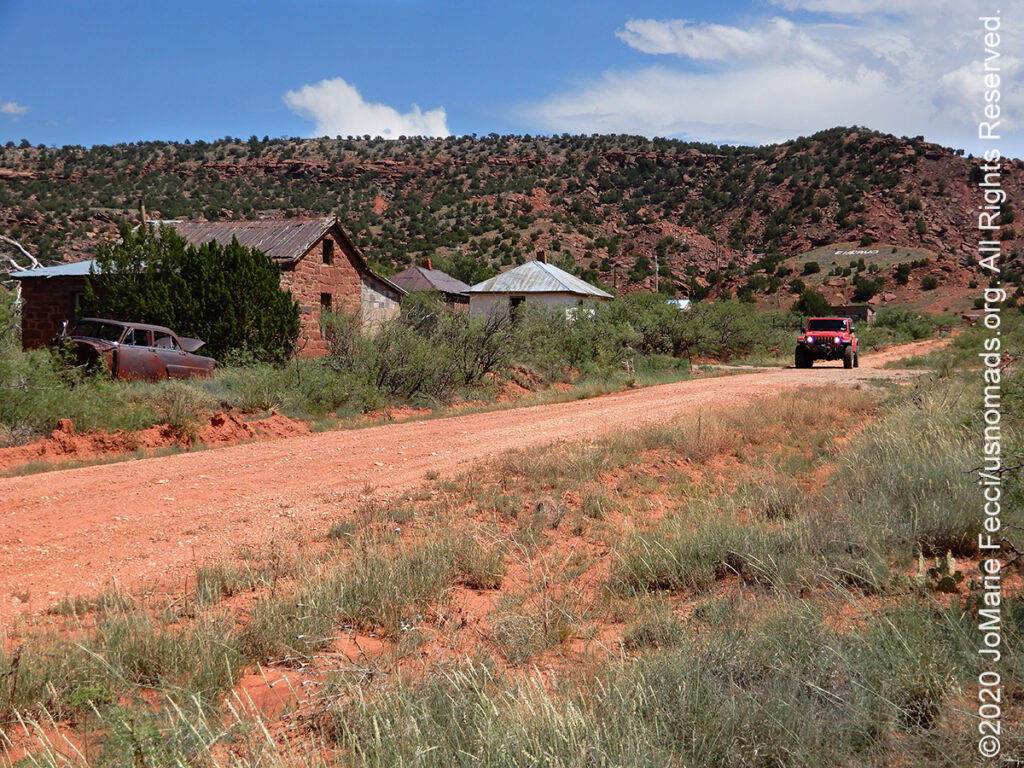Just inside the open entryway of one home I saw two mismatched shoes. On first glance I thought they might have belonged to a homeless person who had used the place for shelter at some point, but as I looked more closely I saw that it was not a “pair” but rather — a man’s and a woman’s — one of each. And the style looked to be from the 1960s or maybe 1970s. The old shoes stood in a ray of sunlight that spilled through the cracked doorway and as I looked around I wondered about the people who lived here. Who were they and what happened to them. How did they come to leave this place and where did they go. So many questions that had no answers.
Cuervo, New Mexico, is located along Interstate 40 a little more than 15 miles east-northeast of Santa Rosa. The town began in 1901 when the railroad came through. The CRI&G Railroad (Chicago, Rock Island and Gulf Railroad) was expanding its tracks westwards from Texas towards Arizona, and they built a railroad siding here, calling it “Cuervo” after a small hill northwest of town (“cuervo” is Spanish for “crow,” which are abundant in the area).
A post office was soon opened and the little town began to grow as the surrounding land was opened to cattle ranching in 1910. It was a small rural community in a ranching district until Route 66 came. The road brought a boom with it, as hotels, gas stations, and other businesses opened to serve the passing travelers, and the town’s population peaked in the 1940s at over 300.


